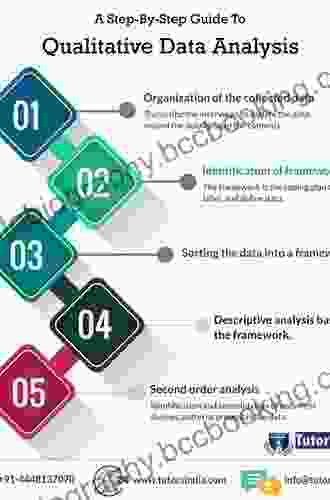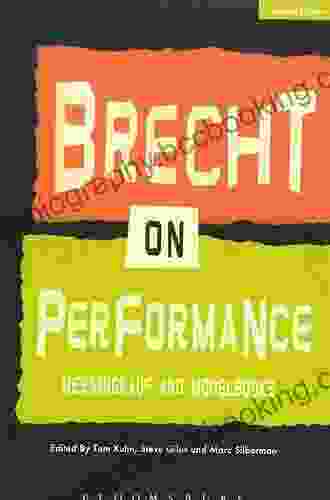Modes of Thinking for Qualitative Data Analysis: A Comprehensive Guide

4.9 out of 5
| Language | : | English |
| File size | : | 1512 KB |
| Text-to-Speech | : | Enabled |
| Enhanced typesetting | : | Enabled |
| Word Wise | : | Enabled |
| Print length | : | 150 pages |
| Screen Reader | : | Supported |
Qualitative data analysis is a complex and challenging process that requires researchers to engage in a variety of thinking modes. These modes of thinking enable researchers to make sense of complex data, identify patterns and themes, and develop meaningful interpretations.
In this article, we will explore the four main modes of thinking for qualitative data analysis: inductive thinking, deductive thinking, abductive thinking, and critical thinking. We will provide a detailed overview of each mode of thinking, discuss its strengths and weaknesses, and provide examples of how it can be used in qualitative research.
Inductive Thinking
Inductive thinking is a bottom-up approach to data analysis that involves generating themes and theories from the data itself. Researchers using inductive thinking start with the data and then gradually move towards more abstract concepts and theories.
Inductive thinking is particularly useful for exploratory research studies, where the goal is to generate new insights and develop new theories. It can also be used to identify patterns and themes in data that may not be apparent from a deductive approach.
However, inductive thinking can be time-consuming and can lead to biased results if the researcher is not careful. It is important to triangulate findings from inductive analysis with other methods, such as deductive analysis or critical thinking.
Deductive Thinking
Deductive thinking is a top-down approach to data analysis that involves testing hypotheses and theories based on existing knowledge. Researchers using deductive thinking start with a hypothesis or theory and then collect data to support or refute it.
Deductive thinking is particularly useful for confirmatory research studies, where the goal is to test existing theories or hypotheses. It can also be used to identify specific patterns or themes in data that are predicted by a theory.
However, deductive thinking can be limited by the existing knowledge base. It is important to be open to new insights and theories that may emerge from the data, even if they do not support the initial hypothesis.
Abductive Thinking
Abductive thinking is a middle-ground approach to data analysis that involves generating hypotheses and theories based on both the data and existing knowledge. Researchers using abductive thinking start with the data, but they also draw on their knowledge of the literature and theory to generate new insights.
Abductive thinking is particularly useful for exploratory and confirmatory research studies. It can help researchers to generate new insights and theories that are grounded in the data, while also being informed by existing knowledge.
However, abductive thinking can be challenging, as it requires researchers to be able to think creatively and to synthesize information from multiple sources.
Critical Thinking
Critical thinking is a process of evaluating and analyzing information in Free Download to form a judgment. Researchers using critical thinking question the assumptions and biases in their data and their own interpretations. They also seek out alternative explanations for their findings.
Critical thinking is essential for all qualitative research studies. It helps researchers to avoid making biased or unsubstantiated claims about their data. It also helps researchers to identify the strengths and weaknesses of their own research.
However, critical thinking can be time-consuming and can lead to negative results. It is important to balance critical thinking with open-mindedness and a willingness to accept new insights.
The four modes of thinking for qualitative data analysis—inductive thinking, deductive thinking, abductive thinking, and critical thinking—are essential for making sense of complex data and developing meaningful interpretations. By understanding the strengths and weaknesses of each mode of thinking, researchers can use them effectively to conduct rigorous and insightful qualitative research studies.
For more information on modes of thinking for qualitative data analysis, please refer to the following resources:
- Thinking Modes for Qualitative Data Analysis: A Primer
- Thinking Strategies for Qualitative Data Analysis
- Modes of Thinking for Qualitative Data Analysis: A Comparative Analysis
4.9 out of 5
| Language | : | English |
| File size | : | 1512 KB |
| Text-to-Speech | : | Enabled |
| Enhanced typesetting | : | Enabled |
| Word Wise | : | Enabled |
| Print length | : | 150 pages |
| Screen Reader | : | Supported |
Do you want to contribute by writing guest posts on this blog?
Please contact us and send us a resume of previous articles that you have written.
 Book
Book Novel
Novel Page
Page Chapter
Chapter Text
Text Story
Story Genre
Genre Reader
Reader Library
Library Paperback
Paperback E-book
E-book Magazine
Magazine Newspaper
Newspaper Paragraph
Paragraph Sentence
Sentence Bookmark
Bookmark Shelf
Shelf Glossary
Glossary Bibliography
Bibliography Foreword
Foreword Preface
Preface Synopsis
Synopsis Annotation
Annotation Footnote
Footnote Manuscript
Manuscript Scroll
Scroll Codex
Codex Tome
Tome Bestseller
Bestseller Classics
Classics Library card
Library card Narrative
Narrative Biography
Biography Autobiography
Autobiography Memoir
Memoir Reference
Reference Encyclopedia
Encyclopedia Brad Leone
Brad Leone Bill Lee
Bill Lee Bill Hylton
Bill Hylton Bill Manley
Bill Manley Benjamin Johnston
Benjamin Johnston Bob Swope
Bob Swope Brandy Roon
Brandy Roon Bethanne Kim
Bethanne Kim Brad Stone
Brad Stone Ben Orlin
Ben Orlin Beth Ann Fennelly
Beth Ann Fennelly Ben Westhoff
Ben Westhoff Boyd Craven Iii
Boyd Craven Iii Blake A Hoena
Blake A Hoena Becky Albertalli
Becky Albertalli Bonnie Gillespie
Bonnie Gillespie Bob Chandler
Bob Chandler Beth A Grosshans
Beth A Grosshans Bboong Bbang Kkyu
Bboong Bbang Kkyu Ben Jones
Ben Jones
Light bulbAdvertise smarter! Our strategic ad space ensures maximum exposure. Reserve your spot today!
 Rod WardFollow ·13.8k
Rod WardFollow ·13.8k Arthur MasonFollow ·11.3k
Arthur MasonFollow ·11.3k Wayne CarterFollow ·10.2k
Wayne CarterFollow ·10.2k Osamu DazaiFollow ·3.1k
Osamu DazaiFollow ·3.1k Ethan GrayFollow ·10.2k
Ethan GrayFollow ·10.2k George R.R. MartinFollow ·19.1k
George R.R. MartinFollow ·19.1k Galen PowellFollow ·6.3k
Galen PowellFollow ·6.3k Kazuo IshiguroFollow ·8.6k
Kazuo IshiguroFollow ·8.6k

 Alex Foster
Alex FosterRediscover the Old Testament with a Captivating Graphic...
Prepare to embark on an extraordinary...

 Ross Nelson
Ross NelsonThe Christmas Story: The Brick Bible for Kids
LEGO® Bricks Meet the...

 Anton Chekhov
Anton ChekhovUnveiling the Hidden History: The Brick Chronicle of...
In the annals of American history, the...

 Blake Bell
Blake BellOptions Trading Crash Course: A Comprehensive Guide to...
In the fast-paced and...

 Percy Bysshe Shelley
Percy Bysshe ShelleyUnlock Your Artistic Potential with "The Practical...
The Indispensable Handbook for...
4.9 out of 5
| Language | : | English |
| File size | : | 1512 KB |
| Text-to-Speech | : | Enabled |
| Enhanced typesetting | : | Enabled |
| Word Wise | : | Enabled |
| Print length | : | 150 pages |
| Screen Reader | : | Supported |













